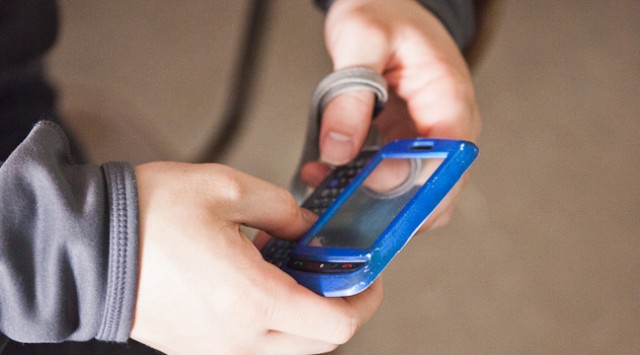Inquiry-based learning grounded in authentic projects go hand in hand with BYOD, Clark said. “What we are trying to do is get to transformative use of tech, where kids are doing things they wouldn’t be able to do without the tech,” Clark said. He recommends using big picture questions to frame ideas and help students identify the many smaller questions within the topic. “I expect that if I go to a student and ask them what’s the big question you are working on they’ll be able to tell me and talk about,” Clark said. “There’s not just one right answer. I want more questions to arise out of that one big question.”
Asking the right questions, developing a research approach, collaboratively deciding on a grading rubric and using all the tools available to complete a project aren’t skills that necessitate the use of technology. But having many devices in the classroom throughout the inquiry process gives educators and students more opportunities, including more authentic ways to showcase student work beyond turning an assignment into a teacher.
The most important thing is to take the focus off of the final product and place it on the process of discovery. “Find ways to ask the right questions to lead students to discover the apps they need to show what they know,” Clark said. He admitted that while the goal is to use the technology to transform learning, much of the time teachers and students are actually only adapting an old task to the new medium. Often that means work can be turned in more quickly and graded more efficiently.
Clark estimates that about 10 percent of the time, Forsyth teachers are able to facilitate a transformative learning experience. “Trying to get towards transforming helps us frame the conversation with our teachers as we provide feedback about the kinds of lessons they’re planning,” Clark said.
DIGITAL CITIZENSHIP
Like many school districts, Forsyth was concerned about how its students would use the internet once they had access all the time. The district started out with a draft policy that required schools to filter internet for things like pornography and gambling, and required certain uses. Schools could then modify that draft for their own needs. But over time, most schools came to just expect responsibility because kids weren’t misusing the privilege.
“There was this respect that grew out of having BYOT and working together in the classroom,” Clark said. The policies soon shifted away from all the things students couldn’t do and became a short list of things students should do. This shift allows teachers to address issues of digital citizenship like privacy, respecting others' work, and standing up to improper uses on a daily basis as they arise.
LEARNING ALONGSIDE STUDENTS
“At the beginning have the kids share how they already know how to use their technology,” Clark said. “Let them decide what apps they want to use to show what they know. The teacher doesn’t need to know all the technology.” He said some of his teachers only know the three to five apps that they find useful, but they allow their students to use whatever helps them achieve their learning goals.
“The teacher is not always directing everything; they have to learn how to learn alongside the students,” Clark said. “Teachers need to feel comfortable sharing that learning with the students and asking for help on the devices.” Many kids love to show off what they know and are good teachers too.
The most important ways the school can support its teachers in the transition to BYOD is to provide training on how to manage the class when devices are involved. One easy way to make it more manageable is to rearrange the classroom to allow more small group work or individual exploration.
DEVICE AND ACCESS EQUITY
According to Clark, the most powerful attribute of BYOD programs is the ability to extend learning beyond the school day. But it can only work if all kids have access to the same opportunities. Twenty percent of Forsyth students receive free and reduced lunch. The district was worried about equity, but jumped in knowing that not every student had a device and that some parents wouldn’t want to send their child to school with a device even if they owned one.
Schools in the district have found that as some kids bring personal devices, the technology in school should be more available for those who don’t bring one. Schools have a centralized location for laptops, rather than a cart or lab, so students can grab a laptop when they need it. “If they’re using that laptop in the classroom that has so much power and another kid is using a smartphone that doesn’t have quite that power or screen real estate, it requires collaboration,” Clark said.
And it allows cash-strapped schools more flexibility. “Since we’re not purchasing handheld devices we can use title funds to buy district devices,” Clark said. Schools have also asked parents to donate old smartphones that can be used on the wi-fi network without a data plan. And, in some cases, schools have bought devices for kids whose families really couldn’t afford one.


